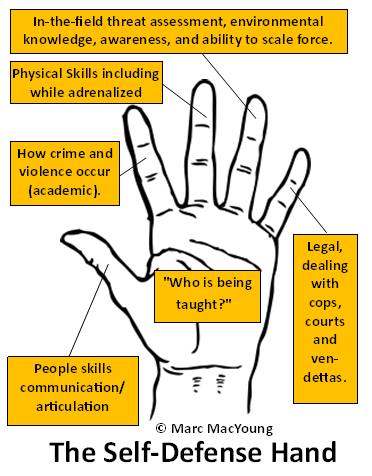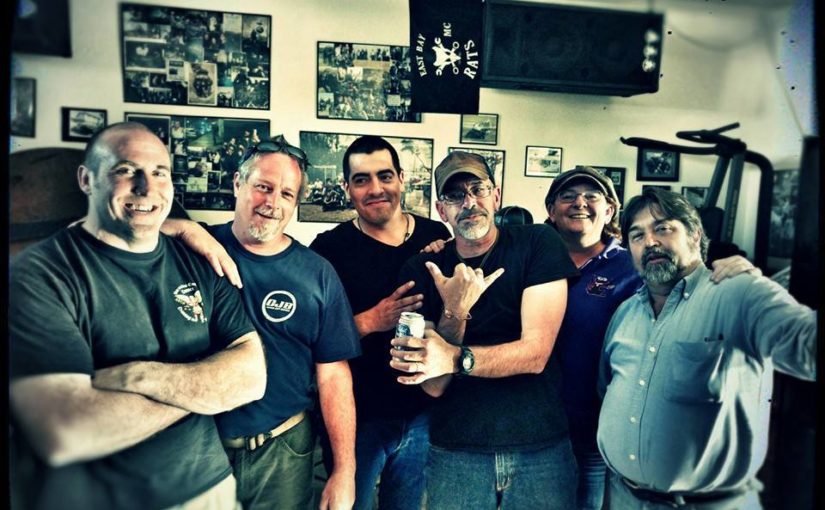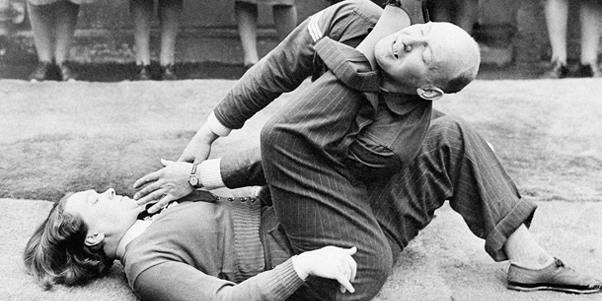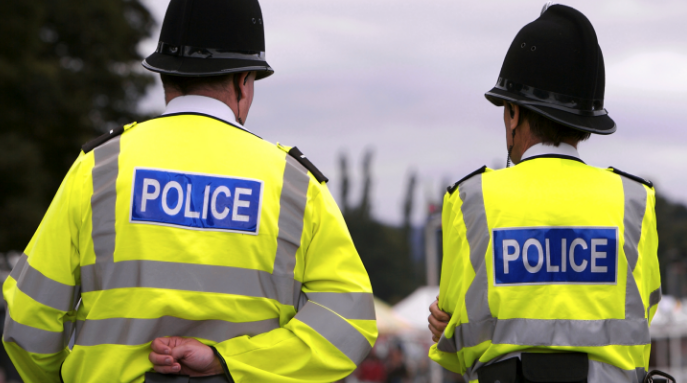The difference between theory and practice is in theory, there is no difference —
An anonymous joker
Last time I talked about how a lot of so-called self-defense training is like an airplane with crack in the wings you can’t see. While you’re parked safely on the ground (in the classroom) these potentially fatal flaws won’t reveal themselves. They’ll come to your attention when you’re a few thousand feet in the air.
Something I want to re-stress is: If nobody has ever shown you how complicated self-defense is, how are you supposed to know?
You’re not. That’s why we’re about to cover what’s next. At the same time, this problem has never revealed itself if you’ve never had to use your training. Or if you have used it without negative effects, you lucked out. I say this because these days I work in the damage control field of when your self-defense does work.
What I’m going to give you a check list for self-defense training. These are subjects that you MUST consider (or better yet have looked into) before you try to use your training. They will help you to be able to ‘tell where you are’ in the ocean of variables. That is what will allow you to scale your responses, adjust to different circumstances, and hopefully, help you get out of a situation before it goes violent.
More than that, if your training didn’t cover these, what you were sold is something else mislabeled as self-defense. Or, as is so often the case, it is only one aspect of many, but that has been over-emphasized to the exclusion of the others. These are the issues you need to fill in the gaps in order for you to be safe and stay out of prison.
Hold up your hand.
First off your palm is “Who is being taught?”
There is no one-size-fits-all or one-stop-shopping when it comes to self-defense training. The needs of an older woman are different than that of a young man who is being bullied at school. Now for more depth, reread the last sentence, but replace ‘needs’ with ‘physical abilities.’ It does a small woman no good to be taught techniques that rely on strength and physical conditioning. Another consideration is people from different backgrounds and environments. A person from the inner city is going to be facing different challenges than someone from suburbia. A police officer has different rules of engagement than a civilian, the ability to walk away (no duty to act) is a big factor in what that person needs to learn. So the question is, is what being taught appropriate (or useful) for that person? Personalizing this, the question is, “Who are you and what are your needs?” Not what you are afraid of, but what you need. This is especially means, ‘what kind of circumstances are you most likely to end up in?’
Like in real life, the palm serves as the basis for everything the hand can do. Also to further the analogy, the fingers work together with each other and the palm. Without this cooperation, much less the presence of these multiple components, a finger is, by itself, useless.
The palm sets the needs, abilities and capabilities of the person. The information must be scaled to and appropriate for the person. For example, don’t try to teach a 110 pound woman to box and call it ‘self-defense.’ A larger, stronger man will pick her up and throw her like a dart. Does she need to know how to effectively hit? Yes. But only as small part of a larger, more effective strategy.
The thumb: People skills, communication/articulation
Simple truth, most violence can be avoided by good people skills. While there are folks out there who will rob you, there are a lot more people who will physically attack you for pissing them off. The people who get into the most violence and conflicts tend to fall short in this skill set. Often in the form of giving their emotions priority. Seriously I’ve seen people flip others off and then squeal they were attacked for ‘no reason.’ And they sincerely believed it too.
Knowing not how to provoke people is a skill. A skill based on understanding how people work and not doing certain things — no matter how justified you feel, how much you want something, how emotional you are or how much of a hurry you are in.
Here’s an example, most violence comes with instructions on how to avoid it. It’s a pretty simple contract, do or stop doing ‘this’ and violence will not occur. In a super majority of the time these instructions are legitimate. “Shut up or I’ll kick your ass” is pretty straight forward contract. However, many people personalize it with “How dare you try to tell me what to do” and instead of shutting up, proceed to comment about the guy’s testicles on his mother’s chin. Then they blame the other person for being unpredictable and not living up to the contract. No, a serious lack of understanding human nature — including your own — is what got your nose broken in those circumstances.
A big advantage of — and why it’s the thumb — people skills is how useful they are. Not only will they help you keep from having to use your self-defense training, they’ll help you get through life, relationships, and job much easier. This wide application takes it outside the realm of just self-defense and makes it a life skill.
Another life skill is communication. Communication is really important for people skills, but it’s also important to let someone know they’re crossing lines. Articulation is a subset of communication, but it’s what is going to keep you out of prison when it comes to explaining to the authorities why what you did was self-defense and not illegal violence. (We’ll come back to this.)
The index finger: How crime and violence occur (academic)
Let me ask you some questions, where did you get your ‘knowledge’ about how crime happens? How about how situations escalate to physical violence? What is your baseline to identify the danger you’re supposedly training to protect yourself from? (Hint, odds are it’s more Hollywood based than you realize.) With those questions comes another. “How can you effectively defend against, much less avoid, a danger that you have no idea how it manifests?”
Violence and crime comes in many forms. Yet, entirely too many people think of violence in terms of what they’ve seen in the movies and going back to a high school fight. In fact, a lot of training prepares you to win that high school fight. Still others are training to ‘win’ in the situation they perceive they ‘lost’ before. That skews one’s perspective. Knowing how both violence works and what developing crime looks like is a key element to assessing danger. Also being able to articulate why you ‘reasonably believed’ what you were doing was self-defense. (Remember I said the fingers work together?)
I’m also going to put something in the ‘academic’ category you need to not only understand, but be able to apply out in the field. That is to ask: What threat assessment model do you know? I really don’t care if it’s Ability, Opportunity, Jeopardy (AOJ), Intent, Means, Opportunity, Preclusion (IMOP), Jeopardy, Ability Means, (JAM), The Five Stages (Intent/Interview/Position/Attack/Reaction) or Ability, Opportunity, Intent (AOI). This is the kind of academic knowledge that can save you. It’s not just in the field, it’s during the aftermath (a.k.a. not being arrested and put into prison).
The middle finger is your physical skills.
This is both the finger that most people focus on giving to their attacker and –at the same time — it’s usually broken.
One of the ways it can be broken is you have to ask: Do the mechanics of what you’re doing actually work? For example, there’s a whole lot more to a punch than just sticking your arm out with a fist at the end. Unfortunately, the way most people are taught, they’re doing the latter and calling it punching. This isn’t the search for the mythical ‘right way to punch.’ I’m talking their punches do not have the mechanics to deliver power — this especially under the stress and whirling chaos of a conflict. What should be a hard punch, loses enough power that it becomes basically a slap.
Another example, is do your blocks actually work? Or would a dedicated attack crash through them? Kind of an important question that. While we’re on the subject, can you hit the target that you’re shooting at — especially when you’re scared, moving and adrenalized? Remember kiddies, every bullet comes with a little lawyer attached and you’re still responsible for the damage any bullet you sent out that misses the intended target.
A second common ‘fracture’ is do you know when to use a move and when not to? For example, do you know when it’s safe to kick at a charging opponent and when it isn’t? (Hint, it depends on the kind of kick and where you’re standing.) Do you know when it’s time for empty hands and when you need to be going for a weapon instead? (This is the failing woefully I mentioned.) When it comes to physical application, every move you know has a time, place, strengths and weaknesses. Did they specifically teach you that? Just knowing a move doesn’t automatically mean you were taught these elements of application.
A third way you can have a broken finger is if you don’t know how to scale your force. As I often tell people, when your mother tells you to “Go handle Drunken Uncle Albert” at a family reunion bone breaking techniques or fatal damage moves are a bit much. (Besides, Aunt Bessy would be pissed.) At the same time, submission techniques aren’t something you want to try when five guys are jumping you.
End Part II




